Maeve O’Meara revels in centuries old dishes cooked by passionate chefs and home cooks as it explores Hungarian cuisine. Maeve meets up with chef Stephen Oroszvari who has a one man mission: to excite the world about the flavors of his homeland. For instance did you know that Hungarians are so passionate about paprika, that they have nicknames for some of their favorite varieties? "Strong Stephen" and "gentle Anna" are just two.
Long time restaurateur Csaba Cserfalvi shares tips on making the perfect schnitzel and also shows how deeply committed Hungarians are to their carbs with a deep fried langos bread and many variations on potatoes. Sport guru Les Murray shares the recipe for his mother's rakott krumpli—layered potaoes with csabai sausage and sour cream. We join a mad wonderful goulash cook off, followed by Stephen's beautiful recipe for Pörkölt—a form of goulash served with nokedli (homemade pasta).
The episode soars to a sweet magnificent crescendo with some of the most exquisite delights made by artisans who have perfected strudels and layered cakes, beigli and tortes. Then food editor and broadcaster Janelle Bloom shares her grandmother's recipe for wicked cream cheese and sour cherry strudel.
Click here for the recipes featured in this episode.
About Hungary
Hungary is a landlocked country in Central Europe. It is situated in the Pannonian Basin and is bordered by Slovakia to the north, Ukraine and Romania to the east, Serbia and Croatia to the south, Slovenia to the southwest and Austria to the west. The capital and largest city is Budapest.
This small country is one of the great survivors of history: states and empires emerged, expanded or disintegrated and disappeared around it. Hungary and the Hungarian nation survived the devastation of the Tartars and Turks, Habsburgs and Russians in the Carpathian Basin; survived the fact that it belonged among the losers of both world wars.
Hungary is a country where 2000 year old Roman ruins and 400 year old Turkish monuments can be found side by side.
Ancient Hungary
The early palaeolithic village Vértesszőlős is most known for the archaeological site where the remains of "Samu", a prehistoric Stone Age man was found.
The Iron Age:
The Iron Age commenced around 800 BCE, when a new population moved into the territory and took possession of the former population’s centers fortified by earthworks. The new population included the Scythians, an ancient Iranian people of horse-riding nomadic pastoralists who dominated the Pontic-Caspian steppe, known at the time as Scythia. They formed the people of the Mezőcsát culture who used tools and weapons made of iron. They extended their rule over what are now the Great Hungarian Plain and the eastern parts of Transdanubia.
Around 750 BCE, peoples of the Halstatt culture occupied gradually the western parts of Transdanubia, but the earlier population of the territory also survived and thus the two cultures existed together for centuries. Between 550 and 500 BCE, new peoples settled along the river Tisza and in Transylvania. Those people, who settled down in Transylvania and in the Banat, may be identified with the Agathyrsi (probably an ancient Iranian tribe whose presence on the territory was recorded by Herodotus); while those who lived in what is now the Great Hungarian Plain may be identified with the Sigynnae. The new population introduced the use of the potter’s wheel in the Carpathian Basin and they maintained close commercial contacts with the neighboring peoples. The Pannonians (an Illyrian tribe) may have also moved to the southern territories of Transdanubia in the course of the 5th century BCE.
In the 4th century BCE, Celtic tribes immigrated to the territories around the river Rába and defeated the Illyrian peoples who had been living there, but the latter managed to assimilate the Celts who adopted their language. By 230 BCE, Celtic peoples had occupied gradually the whole territory of the Great Hungarian Plain and most of the Carpathian Basin.
Around 50 BCE, the mainly Celtic tribes living on the territory were confronted by Burebista, king of the Dacians (82-44 BCE), who began suddenly to expand his domain centered in Transylvania. Burebista’s victory over the Celts led not only to the breakup of their tribal alliance, but also to the establishment of Dacian settlements in the southern parts of today's Slovakia.
Roman Rule:
The Romans commenced their military raids against the Carpathian Basin in 156 BCE. The Roman Empire subdued the Pannonians, Dacians, Celts and other peoples in this territory. The territory west of the Danube was conquered by the Roman Empire between 35 and 9 BCE, and became a province of the Roman Empire under the name of Pannonia. The easternmost parts of present-day Hungary were later (106 CE) organized as the Roman province of Dacia (lasting until 271 CE).
The four centuries (9 CE—430 CE) of Roman rule created an advanced and flourishing civilization. Many of the important cities of today's Hungary were founded during this period, such as Aquincum (Budapest), Sopianae (Pécs), Arrabona (Győr), Solva (Esztergom), Savaria (Szombathely) and Scarbantia (Sopron). Christianity spread in Pannonia in the 4th century, when it became the Empire's official religion.
Theodosius I was the last Emperor who ruled over the whole Roman Empire. As emperor, he made Christianity the official religion of the Roman Empire. After his death in 395 CE, he gave the two halves of the Empire to his two sons Arcadius and Honorius. The Roman state would continue to have two different emperors with different seats of power throughout the 5th century.
The Vandals first settled in western Dacia and Pannonia about 271 CE in a peace treaty with the Roman Emperor Aurelian following a military conflict in the region. They subsequently came into conflict with the Goths around the time of Constantine the Great. At the time, the Vandals were living in lands later inhabited by the Gepids. The Vandals were attacked by the Gothic king Geberic, and their king Visimar was killed.
The Vandals then migrated to Pannonia, where after Constantine the Great (about 330) granted them lands on the right bank of the Danube, they lived for the next sixty years. Around this time, they Vandals had already been Christianized. In 400, possibly because of attacks by the Huns, the Vandals, under king Godigisel moved westwards into Roman territory.
Barbarian Invasions:
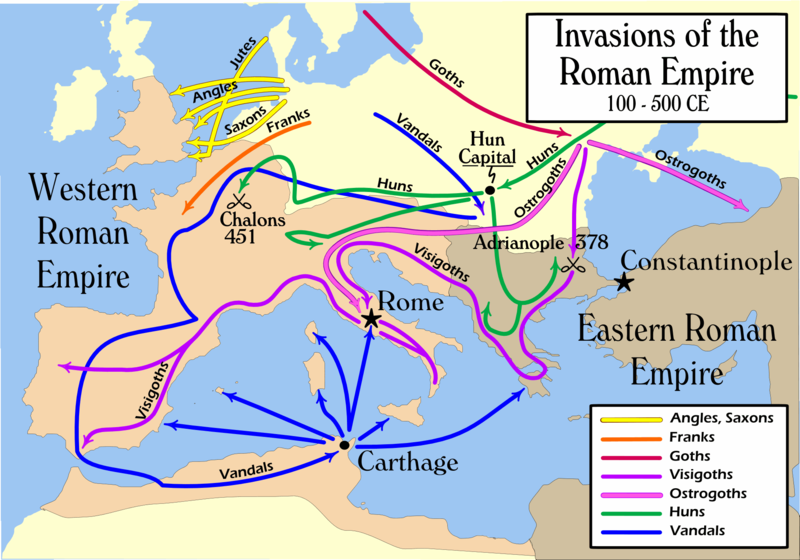 In the mid 3rd century, the Goths launched several devastating raids against the Roman Empire in Anatolia and the Balkans, and conquered Dacia. They repeatedly attacked the Roman Empire during the Gothic war of 375–82 CE. In the late 4th century, the Huns invaded the Gothic region from the east. While many Goths were subdued and integrated into the Hunnic Empire, others were pushed towards the Roman Empire and converted to Arian Christianity by the half-Gothic missionary Wulfila. Only after the death of Attila, would the Goths finally conquer the Huns at the Battle of Nedao in 454.
In the mid 3rd century, the Goths launched several devastating raids against the Roman Empire in Anatolia and the Balkans, and conquered Dacia. They repeatedly attacked the Roman Empire during the Gothic war of 375–82 CE. In the late 4th century, the Huns invaded the Gothic region from the east. While many Goths were subdued and integrated into the Hunnic Empire, others were pushed towards the Roman Empire and converted to Arian Christianity by the half-Gothic missionary Wulfila. Only after the death of Attila, would the Goths finally conquer the Huns at the Battle of Nedao in 454.
In the 5th and 6th centuries, the Goths separated into two tribes, the Visigoths and the Ostrogoths. Both established powerful successor states of the Western Roman Empire. The Visigoths under Alaric I sacked Rome in 410 CE. Later in Italy, the Ostrogothic Kingdom was established by Theodoric the Great. The Ostrogothic nobles were defeated by the forces of the Roman Byzantine Empire in the 20-year-long Gothic war of 535–54 CE which devastated the Byzantine economy and caused up to 15 million deaths, only to result in Germanic Lombardic conquest 10 years later.
Thus, by the time of the final collapse of the Western Roman Empire, it had already become less Romanized and increasingly Germanic in nature. So when General Orestes, in 476 CE, refused the request of Germanic mercenaries in his service for lands in Italy and the dissatisfied mercenaries led by Odoacer revolted, the overthrow of the last western Emperor Romulus Augustus was carried out by federated Germanic troops from within the Roman army rather than by foreign troops.
After the Western Roman Empire collapsed, the Migration Period continued bringing many invaders to Europe. Among the first to arrive were the Huns, who built up a powerful empire under Attila in 435 CE. The Huns firmly established themselves in present day Hungary, using it as a base of operation for their further expansion into both the Western and Eastern Roman Empires. Supplementing their wealth by plundering and raising tribute from Roman cities to the south, the Huns maintained the loyalties of a number of tributary tribes including elements of the Gepids, Scirii, Rugians, Sarmatians, and Ostrogoths. The Hun Empire collapsed in 455 when they were defeated by the neighboring Germanic tribes (such as the Quadi, Gepids and Scirii ).
After Hunnish rule faded, the Germanic Ostrogoths, Slavs, then the Lombards came to Pannonia, and the Gepids had a presence in the eastern part of the Carpathian Basin for about 100 years.
Back to Menu  |
Medieval Hungary:
In the 560s the Avars founded the Avar Khaganate, a state which maintained supremacy in the region for more than two centuries and had the military power to launch attacks against all its neighbors. The Avar Khaganate was weakened by constant wars and outside pressure. The Franks, under Charlemagne, managed to defeat the Avars ending their 250-year rule.
The Kingdom of Hungary:
In the middle of the 9th century, the Slavic Balaton Principality, also known as Lower Pannonia, was established by the Franks, however this vassal state was destroyed in 900 CE by invading Magyar tribes, a semi-nomadic people from what is now central-northern Russia, which was lead by Árpád who unified the Magyars tribes via the Covenant of Blood.
Medieval Hungary controlled more territory than medieval France, and the population of medieval Hungary was the third largest of any country in Europe. The Hungarian leader Árpád is believed to have led the Hungarians into the Carpathian Basin in 896 CE. From 917 to 925, Hungarians raided through Basle, Alsace, Burgundy, Saxony, and Provence.
The century between the Magyars' arrival from the eastern European plains and the consolidation of the Kingdom of Hungary in 1001 CE was dominated by pillaging campaigns across Europe, from Dania (Denmark) to the Iberian Peninsula (modern Spain and Portugal). During the Hungarian campaigns in the 10th century, most European nations were praying for mercy, as a notable prayer of the time shows: "Sagittis hungarorum libera nos Domine"—"Lord save us from the arrows of Hungarians".
After the country's acceptance into Christian Europe under Saint Stephen I, the great-grandson of Árpád, who was crowned with the "Holy Crown of Hungary" sent from Rome by the pope in 1000 CE, Hungary served as a bulwark against further invasions from the east and south, especially against the Turks. The Kingdom of Hungary lasted for 946 years, and at various points was regarded as one of the cultural centers of the Western world.
Mongol Invasion:
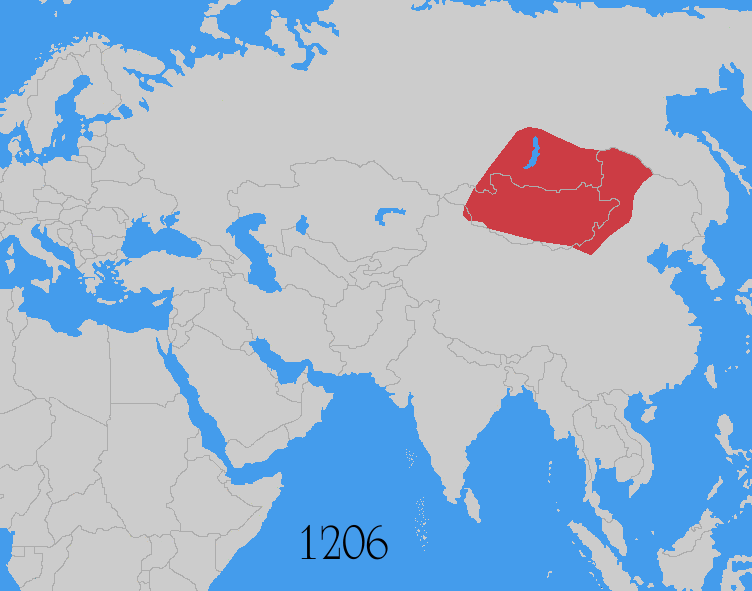 However, in 1241–1242, the kingdom received a major blow with the Mongol (Tatar) Invasion. Up to half of Hungary's then population of 2 million were victims of the invasion.
However, in 1241–1242, the kingdom received a major blow with the Mongol (Tatar) Invasion. Up to half of Hungary's then population of 2 million were victims of the invasion.
King Bela IV let Cumans and Jassic people into the depopulated country, who were fleeing the Mongols. Over the centuries they were fully assimilated into the Hungarian population. If not for the timely death of Genghis Khan, which required all the "Princes of the Blood" of Genghis Khan to return to Mongolia to elect the new Khan, the kingdom most likely would have been completely destroyed. As a consequence, during the Mongols absence, King Béla ordered the construction of hundreds of stone castles and fortifications to defend against a possible second Mongol invasion.
The Mongols returned to Hungary in 1286, but the new built stone-castle systems and new tactics (using a higher proportion of heavily armed knights) stopped them. The invading Mongol force was defeated near Pest by the royal army of Ladislaus IV of Hungary. As with later invasions, it was repelled handily, the Mongols losing much of their invading force.
Decline of the Kingdom of Hungary:
After some 150 years of wars with the invading Turks, the Kingdom of Hungary disintegrated in the early 16th century. After the Battle of Mohács of 1526, it was effectively split into three parts: a central portion controlled by the Ottoman Empire as Budin Province, a western part controlled by Habsburg Austria as Royal Hungary, and Transylvania as the Eastern Hungarian Kingdom which became an Ottoman vassal state.
The ethnic composition of Hungary was fundamentally changed as a consequence of the prolonged warfare with the Turks. A large part of the country became devastated, population growth was stunted, and many smaller settlements perished. The main inhabitants of the Ottoman ruled area were ethnically Hungarians, hence their number was substantially diminished. The Austrian-Habsburg government settled large groups of Serbs and other Slavs in the depopulated south, allowed mass Vlach (Romanian) immigration into Transylvania, and settled Germans in various areas, but Hungarians were not allowed to settle or re-settle in the south of the Great Plain.
Back to Menu  |
Modern Hungary:
After about 150 years of partial Ottoman occupation (1541–1699), Hungary was integrated into the Habsburg Monarchy, and later constituted half of the Austro-Hungarian dual monarchy (1867–1918). In 1914, Austria-Hungary was one of the most powerful nations of Europe, yet with an army of 9 million men, its largely multi-ethnic military was greatly underdeveloped when compared to other armies of Europe at the time.
After their defeat in World War I, Hungary lost over 70% of its territory, along with one third of its population of Hungarian ethnicity, and all sea ports under the Treaty of Trianon, the terms of which have been considered excessively harsh by many in Hungary. As per the terms of the Treaty of Trianon, Hungary lost five of its ten most populous cities and was deprived of direct access to the sea and of some of its most valuable natural resources. The Hungarian Army was reduced to a mere 35,000 troops, Hungary was forbidden to have air force, tanks or any more sophisticated weapons, and its navy ceased to exist.
The borders were set in such a way that all natural defense lines were crossed making the remaining territory totally vulnerable and difficult to defend. The principal beneficiaries of territorial adjustment were Romania, Czechoslovakia, and the Kingdom of Serbs, Croats and Slovenes. In addition, the newly established state of Hungary had to pay war reparations to its neighbors. The Hungarian delegation signed the treaty under protest on 4 June 1920 at the Grand Trianon Palace in Versailles, France.
In the 1930s, the Kingdom of Hungary relied on increased trade with Fascist Italy and Nazi Germany to pull itself out of the Great Depression. By 1938, Hungarian politics and foreign policy had become increasingly pro-Fascist Italian and pro-Nazi German. Hungary benefitted territorially from its relationship with the Axis. Nazi Germany and Fascist Italy sought to enforce peacefully the claims of Hungarians on territories Hungary lost in 1920 with the signing of the Treaty of Trianon. Two significant territorial awards—known as the First Vienna Award and the Second Vienna Award—were made resulting in a number of counties that had been lost in whole or part by the Treaty of Trianon being restored to Hungarian rule.
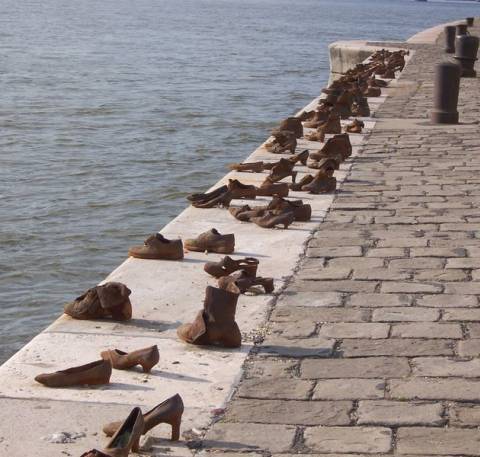
In 1940, under pressure from Germany, Hungary joined the Axis powers. Although initially hoping to avoid direct involvement in World War II, Hungary's participation soon became inevitable. In 1941, Hungarian forces participated in the invasion of Yugoslavia and the invasion of the Soviet Union. However, while waging war against the Soviet Union, Hungary engaged in secret peace negotiations with the United States and the United Kingdom. Hitler discovered this betrayal and, in 1944, German forces occupied Hungary. In 1945, Hungarian and German forces in Hungary were defeated by invading Soviet armies.
Approximately 300,000 Hungarian soldiers and 80,000 civilians died during World War II and many cities were damaged, most notably the capital of Budapest. Most Jews in Hungary were protected from the Holocaust for the first few years of the war. However from the start of German occupation in 1944, Jews and Romas were deported and over 450,000 of them were exterminated in concentration camps. Hungary's borders were returned to their pre-1938 status after its surrender.
On February 1, 1946, the Kingdom of Hungary was formally abolished and replaced by the Second Republic of Hungary. Post-war Hungary was eventually taken over by a Soviet-allied government and it became part of the Eastern Bloc. The People's Republic of Hungary was declared in 1949 and lasted until the Revolutions of 1989 and the End of Communism in Hungary. During its Communist era (1947–1989) Hungary gained widespread international attention regarding the Revolution of 1956 and the unilateral move of opening its border with Austria in 1989, thus accelerating the collapse of the Eastern Bloc.
Economy:
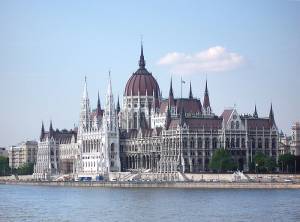 The present form of government is a parliamentary republic, which was established in 1989. The economy of Hungary is a medium-sized, structurally, politically and institutionally open economy in Central Europe and is part of the European Union's (EU) single market. Like most Eastern European economies, the economy of Hungary experienced market liberalization in the early 1990s as part of the transition from socialist economy to market economy. Hungary is a member of the Organisation for Economic Co-operation and Development (OECD) since 1995, a member of the World Trade Organization (WTO) since 1996, and a member of the European Union since 2004.
The present form of government is a parliamentary republic, which was established in 1989. The economy of Hungary is a medium-sized, structurally, politically and institutionally open economy in Central Europe and is part of the European Union's (EU) single market. Like most Eastern European economies, the economy of Hungary experienced market liberalization in the early 1990s as part of the transition from socialist economy to market economy. Hungary is a member of the Organisation for Economic Co-operation and Development (OECD) since 1995, a member of the World Trade Organization (WTO) since 1996, and a member of the European Union since 2004.
Declining exports, reduced domestic consumption and fixed asset accumulation hit Hungary hard during the Financial Crisis of 2008, making the country enter a severe recession of 6.4%, one of the worst economic contractions in its history. However, the country has recovered quite well from the recession, though high unemployment, sluggish growth and the external debt burden are continuing problems. The private sector accounts for over 80% of GDP. Hungary gets nearly one third of all foreign direct investment flowing into Central Europe. A recent estimate done by the CIA has shown that Industrial Production Growth Rate is growing by 11%, among one of the highest in the world, and a signal that the economy is recovering.
Demographics:
Due to migrations and significant territorial changes, the demographics of Hungary have significantly fluctuated over time. In modern times, Hungary has become an ethnically homogeneous state. The census of 2001 registered a population of 9,9 million people with an ethnic composition as follows (based on self-determination): Hungarians 9,416,045 (93.2%), Roma 190,046 (1.9%), Germans 62,233 (0.6%), Slovaks 17,693 (0.17%), Croats 15,620 (0.15%), and Romanians 7,995 (0.08%). For 93.2% of the population, the mother language is Hungarian, a Uralic language unrelated to any neighboring language and distantly related to Finnish and Estonian.
According to census data, the largest religion in Hungary is Catholicism (54.5%—Roman Catholicism 51.9%; Greek Catholicism 2.6%). There is a significant Calvinist minority (16% of the population) and smaller Lutheran (3%), Baptist (0.2%), Ortodox (0.015%) and Jewish (0.1%) minorities. However, fewer than 12% of Hungarians attend religious services at least once a week and fewer than 50% at least once a year, while 30% of Hungarians do not believe in God.
Culture:
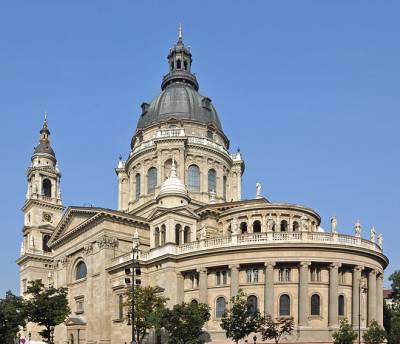 The culture of Hungary has a distinctive style of its own in Hungary, diverse and varied, starting from the capital city of Budapest on the Danube, to the Great Plain bordering Ukraine. Hungary has a rich folk tradition, for example: embroideries, decorated potterys, buildings and carvings. The music of Hungary consists mainly of traditional Hungarian folk music and music by prominent composers such as Liszt, Franz Schmidt, Dohnányi, Bartók, Kodály, and Rózsa. Hungary also has a number of internationally renowned composers of contemporary classical music, György Ligeti, György Kurtág, Péter Eötvös and Zoltán Jeney among them.
The culture of Hungary has a distinctive style of its own in Hungary, diverse and varied, starting from the capital city of Budapest on the Danube, to the Great Plain bordering Ukraine. Hungary has a rich folk tradition, for example: embroideries, decorated potterys, buildings and carvings. The music of Hungary consists mainly of traditional Hungarian folk music and music by prominent composers such as Liszt, Franz Schmidt, Dohnányi, Bartók, Kodály, and Rózsa. Hungary also has a number of internationally renowned composers of contemporary classical music, György Ligeti, György Kurtág, Péter Eötvös and Zoltán Jeney among them.
Hungarian literature is rich and colorful, with many poets and writers, although not many are well known abroad due to the limited prevalence of the Hungarian language being a Uralic language. Some noted authors include Sándor Márai and Imre Kertész, who have been gaining acclaim in recent decades. Imre Kertész won the Nobel Prize in Literature in 2002.
Hungary has had a notable cinema industry from the beginning of the 20th century, with Hungarians who affected the world of motion picture both inside and outside the borders. The former could be characterized by directors István Szabó, Béla Tarr, or Miklós Jancsó, the latter by William Fox, who founded Fox Studios, Alexander Korda, playing a leading role in start of Britain's film industry, or Adolph Zukor, founder of Paramount Pictures. Successful Hungarian films could be exemplified by Merry-Go-Round, Mephisto, or Kontroll. Hungarians in Hollywood have got more than 136 Academy Award nominations and about 30 Academy awards (until 1996).
Tourism in Hungary:
There is a long history of tourism in Hungary, and Hungary was the world's thirteenth most visited tourist destination country in 2002. Tourism increased by nearly 7% between 2004 and 2005, and was attractin 8.6 million tourists per year by 2007. European visitors comprise more than 98 per cent of Hungary's tourists. Austria, Germany, and Slovakia supply the largest amounts of visitors to the country. Most tourists arrive by car and stay for a short period of time. Hungary's tourist season is from April through October; July and August are the peak tourist months.
Budapest is the country's most popular tourist destination and attracting 2.3 million tourists a year. As the largest city of Hungary, it is the country's principal political, cultural, commercial, industrial, and transportation centre. In 2010, Budapest had 1.72 million inhabitants; the Budapest Commuter Area is home to 3.7 million people.
Cited as one of the most beautiful cities in Europe, its extensive World Heritage Site includes the banks of the Danube, the Buda Castle Quarter, Andrássy Avenue, Heroes' Square and the Millennium Underground Railway, the second oldest in the world. Other highlights among the many sights and historic places in Budapest include the Saint Stephen's Basilica, Great Market Hall, Liberty Bridge, Dohány Street Synagogue, the largest synagogue in Europe, Parliament Building with the Holy Crown of Hungary and sceptre, and Statue Park.
Hungary has an estimated 1,300 thermal springs, a third of which are used at spas across the country. Hungary's thermal baths have been used for 2,000 years for cleansing, relaxation and easing aches and pains. The Romans were the first to use Hungary's thermal waters in the first century, when they built baths on the banks of the Danube River. Budapest has been a popular spa destination since Roman times. Some of the baths in the city date from Turkish times while others are modern. They have steam rooms that utilize the healing properties of the springs. Most of the baths offer medical treatments, massages, and pedicures.
The country is home to the largest thermal water cave system, and there are two hundred known caves under Budapest, some of which can be visited by tourists and are a popular tourist attraction. Hungary is also home to the second largest thermal lake in the world (Lake Hévíz), the largest lake in Central Europe (Lake Balaton), and the largest natural grasslands in Europe (Hortobágy).
Hungarian Cuisine
 Hungarian cuisine is the cuisine characteristic of the nation of Hungary. Traditional Hungarian dishes are primarily based on meats, seasonal vegetables, fruits, fresh bread, cheeses and honey. Recipes are based on centuries-old traditions of spicing and preparation methods.
Hungarian cuisine is the cuisine characteristic of the nation of Hungary. Traditional Hungarian dishes are primarily based on meats, seasonal vegetables, fruits, fresh bread, cheeses and honey. Recipes are based on centuries-old traditions of spicing and preparation methods.
Hungarian cuisine has influenced the history of its primary ethnic group, the Magyars. The importance of livestock and the nomadic lifestyle of the Magyar people is apparent in the prominence of meat in Hungarian food and may be reflected in traditional meat dishes cooked over the fire like goulash , pörkölt stew and the spicy fisherman’s soup called halászlé are all traditionally cooked over the open fire in a bogrács (or cauldron).
In the 15th century, considerable numbers of Saxons (a German ethnic group), Armenians, Italians, Jews and Serbs settled in the Hungarian basin and in Transylvania, thus elements of their food has also been incorporated in the the national cuisine. Elements of ancient Turkish cuisine were adopted during the Ottoman era, in the form of sweets, Turkish coffee, the cake called bejgli or rice dishes like pilaf, meat and vegetable dishes like the eggplant, and stuffed peppers and stuffed cabbage called töltött káposzta .
Hungarian cuisine was influenced by Austrian cuisine under the Austro-Hungarian Empire; dishes and methods of food preparation have often been borrowed from Austrian cuisine, and vice versa. Some cakes and sweets in Hungary show a strong German-Austrian influence. All told, modern Hungarian cuisine is a synthesis of ancient Asiatic components mixed with Germanic, Italian, and Slavic elements. The food of Hungary can be considered a melting pot of the continent, with its own original cuisine from its original Magyar people.
Dishes:
Hungarian food is often spicy, due to the common use of (hot paprika). Sweet (mild) paprika is also common. Additionally, the combination of paprika, lard and yellow onions is typical of Hungarian cuisine, and the use of the thick sour cream called tejföl.
Meat stews, casseroles, steaks, roasted pork, beef, poultry, lamb or game and the Hungarian sausages (kolbász) and winter salami are a major part of Hungarian cuisine. The mixing of different varieties of meat is a traditional feature of the Hungarian cuisine. Goulash, stuffed peppers, stuffed cabbages or Hungarian mixed grill on a wooden platter (fatányéros) can combine beef and pork, and sometimes mutton. In very exclusive dishes, fruits like plums and apricots are cooked with meat or in piquant sauces/stuffings for game, roasts and other cuts. Various kinds of noodles and dumplings, potatoes and rice are commonly served as a side dish.
 Hungarians are especially passionate about their soups, desserts and pastries and stuffed pancakes (palacsinta), with fierce rivalries between regional variations of the same dish, like the Hungarian hot fish soup called Fisherman's Soup (called halászlé). Other famous Hungarian dishes would be Paprikás (paprika stew, meat simmered in thick creamy paprika gravy) served with nokedli (small dumplings), Goulash, Gundel Pancake (pancakes served flambéed in dark chocolate sauce filled with ground walnuts), and Dobos Cake (layered sponge cake, with chocolate buttercream filling and topped with a thin caramel slice).
Hungarians are especially passionate about their soups, desserts and pastries and stuffed pancakes (palacsinta), with fierce rivalries between regional variations of the same dish, like the Hungarian hot fish soup called Fisherman's Soup (called halászlé). Other famous Hungarian dishes would be Paprikás (paprika stew, meat simmered in thick creamy paprika gravy) served with nokedli (small dumplings), Goulash, Gundel Pancake (pancakes served flambéed in dark chocolate sauce filled with ground walnuts), and Dobos Cake (layered sponge cake, with chocolate buttercream filling and topped with a thin caramel slice).
Two remarkable elements of Hungarian cuisine are different forms of vegetable stews (called főzelék) as well as cold fruit soups, like cold sour cherry soup (called hideg meggyleves).
The Hungarian cuisine uses a large variety of cheeses, but the most common are túró (a fresh quark cheese), cream cheeses, juhturó (ewe/sheep cheese), Emmentaler, Edam and the Hungarian cheeses Trappista and Pálpusztai.
Beverages:
Hungarian wines date back to at least Roman times, and that history reflects the country's position between the Slavs and the Germanic peoples. The best-known wines are the white dessert wine called Tokaji (after the North-Eastern region of Hungary, Tokaj) and the red wines from Villány (Southern part of Hungary). Famous is also the wine called Bull's Blood (Egri Bikavér), a dark, full-bodied red wine. Hungarian fruit wines, like redcurrant wine, are mild and soft in taste and texture.
Though not as famous as the country's wines, Hungarian beer has a long history as well. Hungary's most notable liquors are Unicum, a herbal bitters, and Pálinka, a range of fruit brandies.
Also notable are the 21 brands of Hungarian mineral waters. Some of them have therapeutic value, like Mira or the Transylvanian Borszéki.
Episodes:
 |
AFRICAN: Wherever you are in Africa, no meal is complete without a starchy porridge known as fufu. |
 |
BRAZILIAN: An exuberant, colorful mix of Portuguese, African and native foods including some from the Amazon. |
 |
CHINESE: Two thirds of households own a wok and use it regularly, but not everyone knows how to use it properly. |
 |
EGYPTIAN: Beans are used extensively and creatively as a source of protein, fibre, and comfort. |
 |
ENGLISH: "Meat & three veg" originated in the UK with dishes like roast beef, steak and kidney pie, and many more. |
 |
FRENCH: The French have elevated food into an art form. Nowhere else is so much attention paid to what people are going to eat and how. |
 |
INDIAN: A vibrant, intensely colorful cuisine. Each region of India has its own style of cooking and distinct flavors. |
 |
INDONESIAN: One of the most vibrant and colorful cuisines in the world, full of intense flavor and varied textures. |
 |
ITALIAN: An long-awaited introduction to the kitchens and restaurants of Australia’s top Italian chefs and home cooks. |
 |
JAPANESE: Refined and elegant, its preparation and presentation honed over the centuries so its flavors are pure and delicate. |
 |
JEWISH: While flavors of the Jewish palate are influenced by geography, the constant for Jews all over the world are the Kosher laws. |
 |
KOREAN: Some of the healthiest food on earth, with a near obsession with the fermented vegetable kimchi. |
 |
LEBANESE: Lebanese cuisine is generous and abundant, and this is some of the most exquisite food in the world. |
 |
MALTESE: The rocky island of Malta is home to some beautiful rustic recipes that sing of Mediterranean flavor and freshness. |
 |
MEXICAN: Authentic Mexican food is vibrant, spicy, delicious and fun. It varies according to which region its from. |
 |
MOROCCAN: One of the most cleverly balanced cuisines on earth; spices are used to enhance the flavor of dishes. |
 |
PAKISTANI: Full of marvelous and diverse dishes, it incorporates elements from its neighbors India, Afghanistan and Iran. |
 |
PERSIAN: From simple dips to hearty stews, food preparation is taken very seriously in Iran and is often a labor of love. |
 |
SOUTH AMERICAN: A fantastic fusion of culinary traditions from indigenous Indians, imported Africans, and the Spanish and Portuguese colonist. |
 |
SRI LANKAN: This beautiful spice island is a rich melting pot of every nationality that has visited and traded with it over the years. |
 |
SYRIAN: One of the highlights of Syrian food is mezza, a generous spread of small dishes and the prelude to even more food! |
 |
TURKISH: Nestled between Asia and Europe, Turkish food is an unique and exotic fusion with influences from many countries. |
Contact Us | Shop | Sitemap | Join Our Team | Investors | Advertise | Web Design Services
Community | Foodies' Choice | Meetup Groups | Chat | Blogs | Forums | Submit Your Site | Resources

